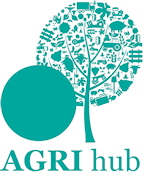 Housing is a key aspect of most livestock farms – and both its design and internal features can be the making or breaking of welfare and productivity.
Housing is a key aspect of most livestock farms – and both its design and internal features can be the making or breaking of welfare and productivity.
This year’s Dairy Show (2 October) will feature a huge range of the latest research and technology on offer, helping all producers – whether dairy or beef – to make the most of their existing or new buildings.
The packed seminar programme has a theme of ‘Put a roof on it’, and will feature eminent speakers covering a broad spectrum of livestock housing considerations.
Louise Clarke, ruminant manager at Alltech, will be kicking off the day with a talk entitled: ‘Is she happy in her environment? The impact of feed waste and input utilisation.’
A recent survey by Alltech revealed that on average £1 in every £3 spent on farm is wasted – whether through feed losses from field to rumen, poor fertility, or poor housing design.
In a bid to improve farm efficiencies, it has launched a new Navigate programme, offering free site visits and assessments to every dairy farm in the UK.
“It’s about looking at the whole environment and the effect it has on the cow,” says Ms Clarke.
“Is her lying time being compromised due to small cubicles, is there enough access to feed and water, are there health challenges?”
The four main stages of feed waste are: In the field, during storage, at feed-out and inside the cow – and an independent assessment can help producers to make significant improvements, she adds.
“If farmers can be more efficient, resilient and sustainable then that’s of benefit to the whole industry.”
Duncan Forbes, dairy research director at Kingshay, will be discussing future dairy and the agri-tech revolution.
“This will look at how technology can enhance stockmanship and help to optimise cow welfare and productivity,” he says.
“I will be referring the tech in use at the South West Dairy Development Centre and invite delegates to call in to the dairy on their way home from the show to see for themselves.”
Following this will be Matt Sellers and Mike Bryan from the Galebreaker Group, exploring the importance of providing natural ventilation and controlling humidity within livestock buildings. “When a good climate is achieved the animals will feel comfortable,” says Mr Sellers.
“This is of key importance for the health, fertility and profitability of the herd. Products can be used together to optimise a building’s climate for the herd – and the herdsman – which in turn will help to improve the number of lactations per cow.”
Concluding the programme will be Mike Steele, director of technical services at Micron Bio-Systems, in a talk entitled: ‘Where’s the value in pre-wean environments and management?’
This quick-fire, interactive session will consider farmers’ average age at first calving, and what this means in terms of future milk value as well as the main influencers of this parameter.
“Age at first calving is a measure of all inputs in youngstock management, including environment, nutrition, health and protocols on farm,” says Mr Steele.
“Maximising returns in the first lactation can be managed by shaping any of these and I will be happy to discuss any questions the audience can fire on this subject.”
As every farmer knows, animal health has a huge impact on any livestock business, says Alan Lyons, head of shows at the Royal Bath & West Society.
“A happy, healthy productive cow will earn money, year after year. Housing is an important part of that and through this informative seminar programme we are sure that visitors will pick up a plethora of useful advice to drive efficiencies in future.”
- The Dairy Show will be held on 2 October at the Bath & West Showground. Schedules for show classes are available online, and advance saver tickets can be purchased from bathandwest.com.
- The Dairy Show is registered with Dairy Pro and current members and those who join at the event will get their attendance registered on their personal development record and receive 2 Dairy Pro points.



